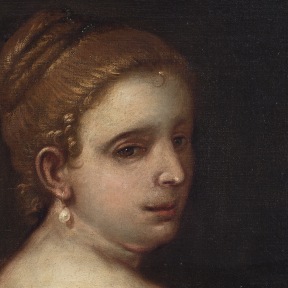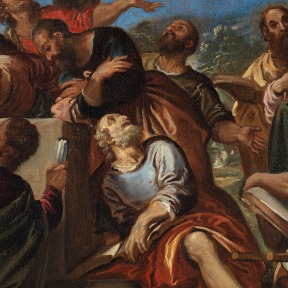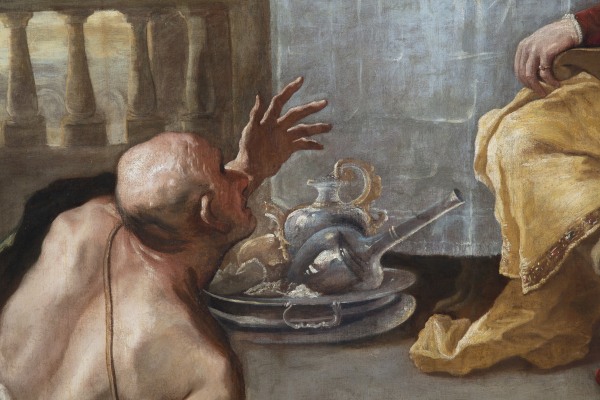-
Biografia
Antonio Carneo (Concordia Sagittaria, Italia 1637 – Portogruaro, Italia 1692)
Nato a Concordia Sagittaria in provincia di Venezia nel 1637, Carneo vive i suoi primi anni a Portogruaro, per spostarsi poi a Cordovado, dove la sua presenza è documentata dal 1658 al 1667.
Scarse sono le informazioni relative alla sua vita e alla sua attività, a partire dalla sua formazione svoltasi probabilmente con alcune figure chiave della pittura veneta, come Palma il Giovane, Padovanino, Tintoretto e Jacopo da Ponte detto Bassano.
Nel 1667 si trasferisce a Udine in una casa di proprietà del Conte Leonardo Caiselli che gli assicura protezione, vitto e alloggio, in cambio delle sue opere.
Siamo ormai di fronte a un pittore maturo dal linguaggio pittorico affinato,
dove predomina il chiaroscuro e la fascinazione verso i volti segnati delle persone semplici, del popolo, la cui espressività è sempre catturata ed enfatizzata con grande maestria, di derivazione caravaggesca.
Affermato pittore, Carneo ha molte committenze private, pubbliche ed ecclesiastiche, che gli permettono di esplorare riferimenti sempre diversi e ampliare i margini di sperimentazione. Tutto ciò contribuisce a renderlo una delle figure più particolari del Barocco veneto.
Trascorre gli ultimi anni della sua vita a Portogruaro, dove muore nel 1692.
Foto UniCredit Group (Sebastiano Pellion di Persano)
-
Opere
-
 Cristo e l’adultera, c.1650-1700Dettagli
Cristo e l’adultera, c.1650-1700Dettagli -
 Il Redentore, c.1650-1700Dettagli
Il Redentore, c.1650-1700Dettagli -
 La Sacra Famiglia, c.1650-1700Dettagli
La Sacra Famiglia, c.1650-1700Dettagli -
 Menade addormentata, c.1650-1700Dettagli
Menade addormentata, c.1650-1700Dettagli -
 Aracne tesse la tela (o l’Indovina), 1660Dettagli
Aracne tesse la tela (o l’Indovina), 1660Dettagli -
 La buona ventura (La seduzione), 1660Dettagli
La buona ventura (La seduzione), 1660Dettagli -
 Vecchia con conocchia e giovane con spighe, 1660Dettagli
Vecchia con conocchia e giovane con spighe, 1660Dettagli
-
Antonio Carneo: Italiano, 1637-1692
Pittore italiano di rilievo nel panorama pittorico veneto-friulano della seconda metà del Seicento; ha realizzato dipinti con soggetti allegorici, mitologici e religiosi, con caratteristiche di derivazione caravaggesca.
Join Our Mailing List
* denotes required fields
Per rispondere alla tua richiesta, elaboreremo i dati personali che ci hai fornito in conformità con la nostra politica sulla privacy.















